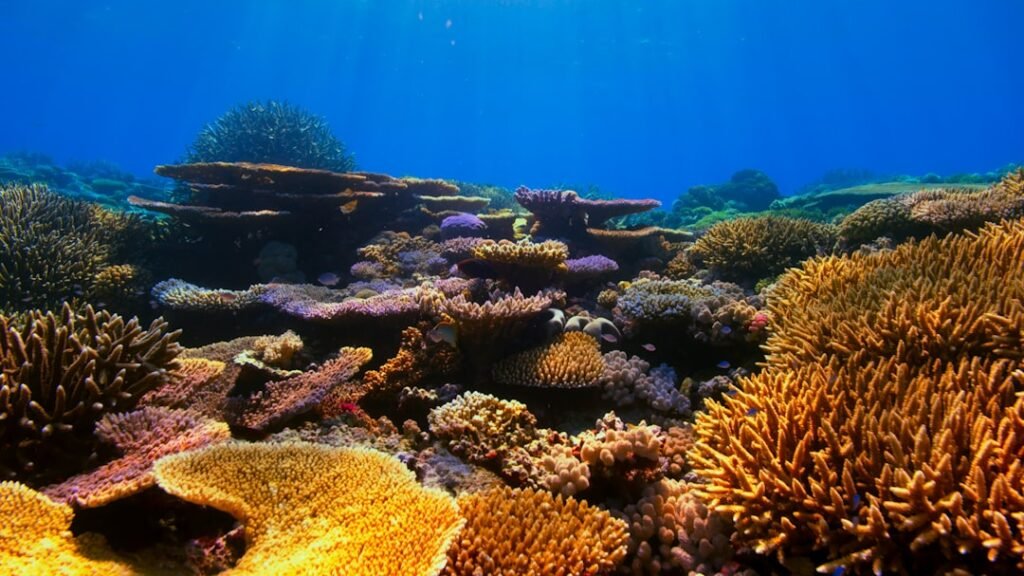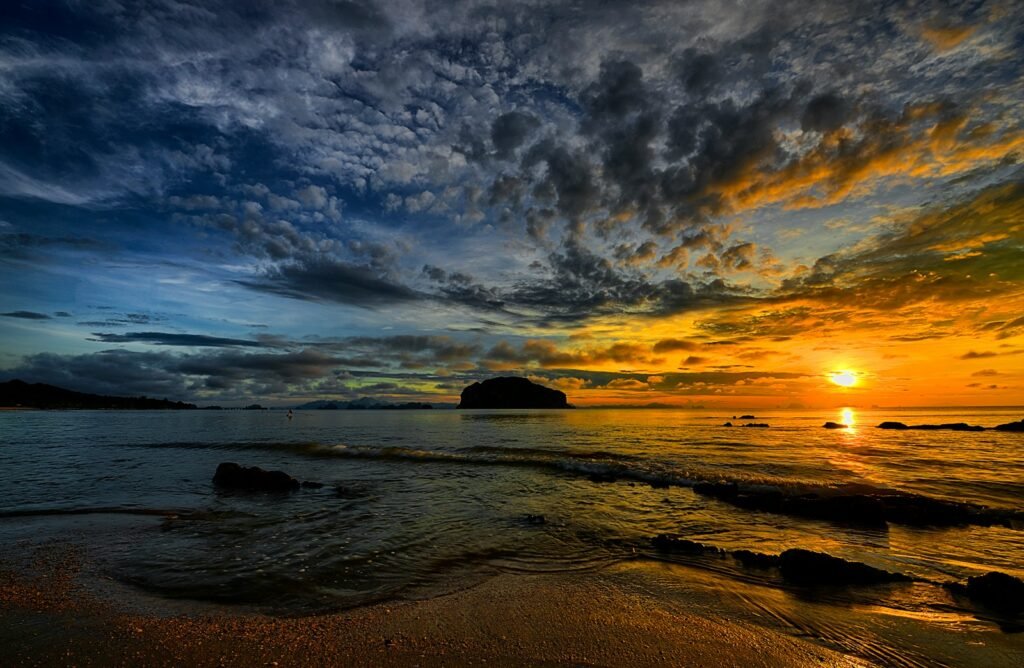Something remarkable is happening beneath the azure waters surrounding Hawaii’s islands. After years of devastating bleaching events and environmental challenges, the state’s coral reefs are showing signs of miraculous recovery thanks to groundbreaking restoration efforts and innovative community partnerships. The transformation represents hope not just for local marine ecosystems, but for coral conservation efforts worldwide.
This recovery story began with tragedy. In 2014 and 2015, global coral bleaching events devastated Hawaiian reefs, with some areas experiencing mortality rates of up to fifty percent. What seemed like an ecological disaster has now become the catalyst for one of the most ambitious coral restoration programs on the planet. Through a combination of cutting-edge science, traditional Hawaiian wisdom, and unprecedented collaboration, these underwater forests are returning to life in ways that have surprised even the experts.
Revolutionary Fish Farm Coral Rescue Delivers Hundreds of New Colonies

In November 2024, conservation divers completed what scientists are calling “one of the largest mature colony collections” ever undertaken on Hawaii Island. The dramatic operation involved removing nearly 11 years worth of coral growth from a decommissioned offshore fish farm pipe ring that had inadvertently become a massive coral nursery.
Divers from the DLNR Division of Aquatic Resources (DAR), The Nature Conservancy (TNC), and Arizona State University (ASU) teamed up to remove hundreds of large, healthy, native coral heads from the ring. These structures had supported Hawaiian Kanpachi fish farming operations for over a decade, during which time diverse coral colonies established themselves throughout the underwater infrastructure.
The larger corals were taken by boat back to the reef, in-shore of the fish pens. Then the full crates were lowered to the ocean floor by divers. Meanwhile, the smaller, wrapped corals were taken to a new coral nursery at the National Energy Laboratory of Hawaiʻi. This carefully orchestrated rescue operation saved coral colonies that would have otherwise perished when the decommissioned equipment was eventually removed.
Pacific’s Largest Coral Nursery Opens Its Doors

The rescued corals found their new home at the ʻĀkoʻakoʻa Coral Restoration Nursery, which opened in May and is the first large, land-based coral nursery on Hawaiʻi Island and is thought to be the biggest nursery of its type in the entire Pacific. This state-of-the-art facility represents a quantum leap in coral restoration technology and ambition.
The program has multiple facilities along the western coast of Hawaiʻi Island, housing 72 specialized coral-rearing tanks – known as raceways in the coral restoration world – and two colossal seawater filtration systems, each worth about $1 million. Each one of these raceways can hold 1,000 coral colonies, but then our system is designed to produce millions of babies from each of these coral colonies.
Once the program reaches full capacity, researchers expect to produce “one million coral offspring per tank per year”. The nursery provides what scientists describe as “a kind of an intensive care unit for those corals that we’re rescuing and know that we’re giving them the absolute best conditions”.
Breakthrough Thermal Tolerance Research Changes the Game

The project will identify individual corals with high thermal tolerance and other high-performance traits, then use them to breed genetically resilient coral larvae for release onto the reefs during natural spawning periods. This approach represents a paradigm shift from traditional restoration methods that simply moved existing corals around.
Scientists are focusing on developing coral populations that can withstand rising ocean temperatures, the primary driver of coral bleaching events. Currently 8 raceways contain corals from different regions throughout the west coast of Hawaiʻi Island. These corals are being used for sexual reproduction, asexual propagation, gene banking, and thermal tolerance research.
The research component is crucial because while coral reefs can regrow after bleaching, recovery can take decades. By developing heat-resistant coral varieties, scientists hope to create reef communities that can survive future warming events without experiencing the catastrophic mortality seen in 2014 and 2015.
Massive Scale Restoration Targets 120-Mile Reef System
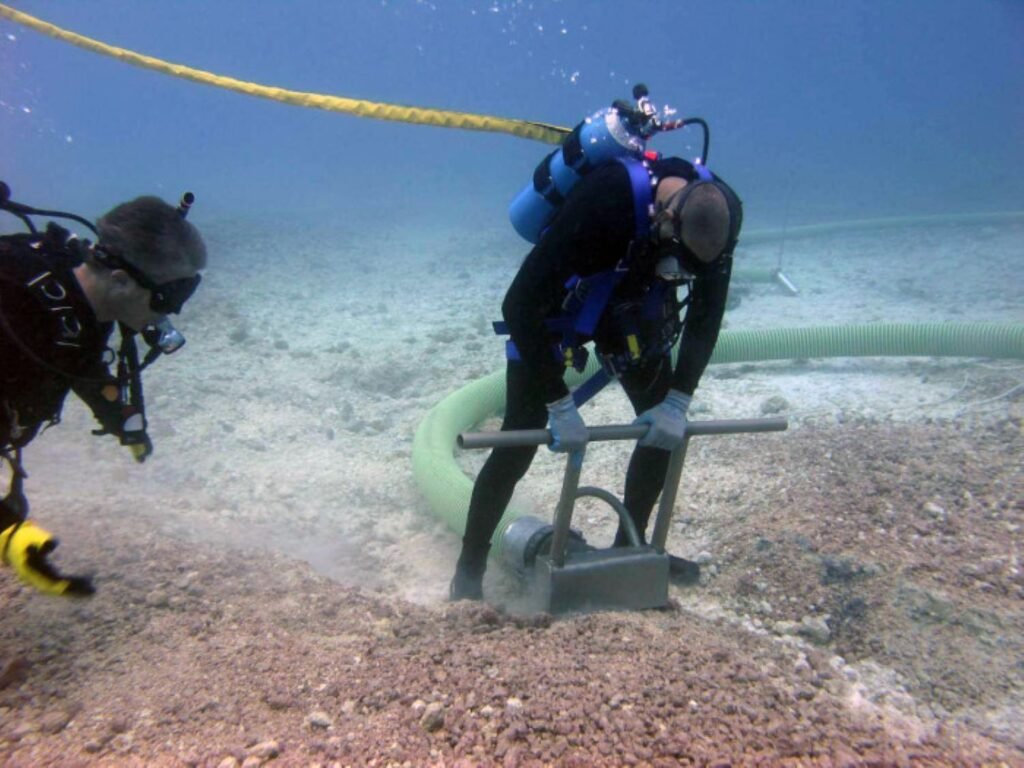
The ʻĀkoʻakoʻa program, which means “bringing people and coral together” in Hawaiian, aims to restore a 193-kilometer (120-mile) stretch of coral reef along the west coast of Hawaiʻi Island – one of the first to attempt restoration at a large scale. This ambitious undertaking dwarfs previous coral restoration efforts in both scope and methodology.
The project, called ʻĀkoʻakoʻa, could be one of the first to conduct coral restoration at a large scale. To achieve this goal, funders have pledged to invest $25 million over five years. Some of the funding comes from the Dorrance family (heirs to the Campbell’s Soup Company) and the Dorrance Family Foundation; other funding comes from grants from the National Oceanic and Atmospheric Administration, the state of Hawaiʻi, and a mix of other government and private sources.
The scale of this restoration effort is unprecedented in the Pacific region. Rather than focusing on small reef patches, the program plans to restore the largest contiguous coral reef in the Hawaiian archipelago. This comprehensive approach could provide a model for large-scale coral restoration projects worldwide.
Native Hawaiian Knowledge Guides Modern Restoration Science

For Native Hawaiians, the value of coral runs much deeper. The Kumulipo, a Hawaiian creation chant, explains that all life started with the coral polyp, their earliest ancestor. This cultural connection is driving community participation in restoration efforts across the islands.
Coral reef restoration is still relatively new in Hawaiʻi, so the funds will also support training Native Hawaiians and local residents in underwater coral restoration techniques. Kuleana Coral Restoration, the first Native Hawaiian nonprofit dedicated to coral restoration, recently graduated their first cohort of early-career ocean conservationists.
The integration of traditional Hawaiian environmental stewardship values with cutting-edge science is proving particularly effective. ʻĀkoʻakoʻa is working with partners to reduce other stressors to the reefs, which can help corals be more resilient to rising sea temperatures, and drawing on Hawaiian traditional values of environmental stewardship. This holistic approach addresses not just coral planting, but the entire watershed system that affects reef health.
Coral Fragments of Opportunity Get Second Chances at Life
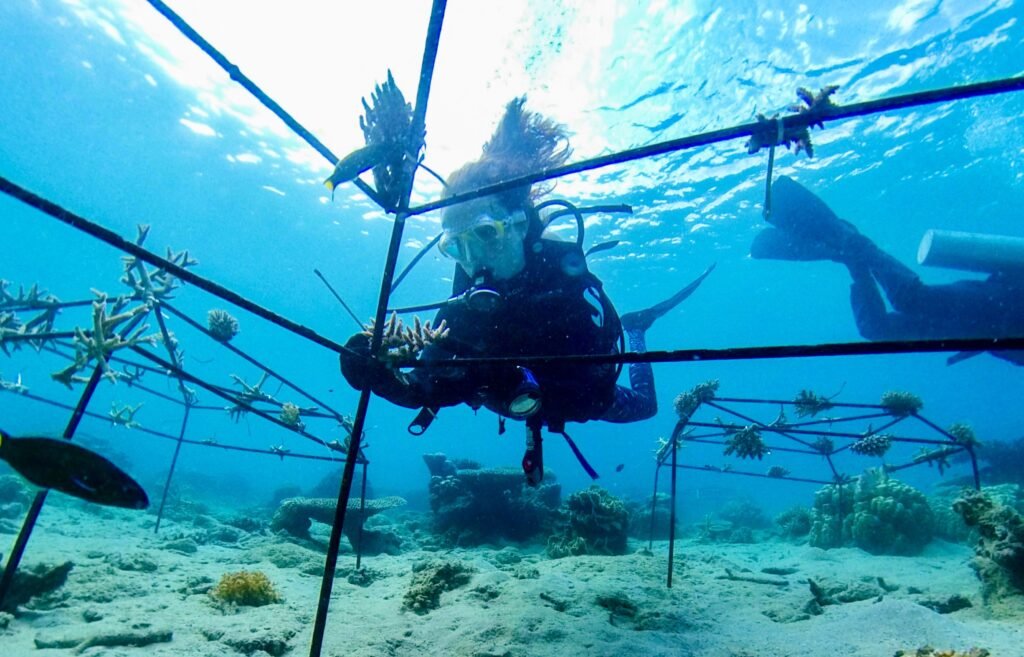
One of the most successful techniques being employed involves rescuing coral fragments that would otherwise die. The restoration teams recover and use only those corals that have been broken during recent storms or high swells and would otherwise die. To minimize the risk of introducing disease or invasive species from other places, the teams only replant corals near where they were recovered.
Coral stabilization is the process of attaching coral fragments that have been broken off, often during damaging events like storms, large swells and ship groundings. Broken coral fragments – referred to as “corals of opportunity” – can be replanted onto the reef using epoxy, cement or other non-toxic underwater adhesives.
This technique has shown remarkable success rates. Stabilizing these fragments dramatically increases their chances of survival and regrowth and prevents them from rolling around on the sea floor, where they can cause further damage. The approach allows restoration teams to save corals that would have died naturally while avoiding the ethical concerns of harvesting healthy coral colonies.
Community Partnerships Drive Unprecedented Collaboration

The success of Hawaii’s coral restoration efforts stems largely from unprecedented collaboration between government agencies, academic institutions, non-profit organizations, and private industry. In 2020, the Division of Aquatic Resources (DAR) teamed up with experts from the Hawaiʻi Institute of Marine Biology, The Nature Conservancy, and the National Oceanic and Atmospheric Administration to form a “core hui” – a group dedicated to drafting action plans that tackle the state’s biggest coral restoration priorities. These plans aim to improve coordination and collaboration amongst agencies, nonprofit groups, researchers, and communities to streamline restoration planning, permitting, and evaluation processes.
Private industry has also become an unexpected ally in coral conservation. Blue Ocean Mariculture Chief Executive Officer Dick Jones said his company is committed to the health and resilience of Hawaiʻi’s marine ecosystems and honored to partner with the state and its partners for the coral reef restoration initiative. By providing reef samples from our net pens off the Kona Coast, we can help support the regeneration of vital species in our coral reefs, reinforcing both environmental sustainability and the balance of Hawaiʻi’s coastal waters. This collaboration is a natural extension of our team’s dedication to Hawaiʻi’s ocean ecosystems and to preserving their vitality for future generations.
The partners worked closely through the past couple of years to build capacity for coral restoration and emergency response. This coordinated approach has enabled rapid response to coral rescue opportunities and more efficient use of limited restoration resources.
Strategic Geographic Focus Areas Show Promising Results

The restoration plan outlines five geographic focus areas: Kealakekua Bay Marine Life Conservation District and Kaʻūpūlehu on Hawaiʻi Island, Olowalu on Maui, and Waikīkī, and Hanauma Bay on Oʻahu. These are some of the most promising locations for coral restoration interventions and some projects are already underway at some of these sites, helping build restoration capacity throughout the state.
Each location presents unique challenges and opportunities for restoration work. One of DAR’s key restoration sites is located within Kealakekua Bay. Restoration staff regularly join community meetings to discuss restoration planning and implementation. The restoration design that was created with help from community leadership involves reattaching corals of opportunity (COOs – dislodged corals) back to the reef to increase their chances of surviving long-term.
The geographic diversity of restoration sites allows researchers to test different techniques across varying environmental conditions. Restoration and control plots will be mapped and monitored over the next several years to begin assessing what methods have the most success at each specific site.
Comprehensive Monitoring Reveals Ecosystem Recovery Patterns
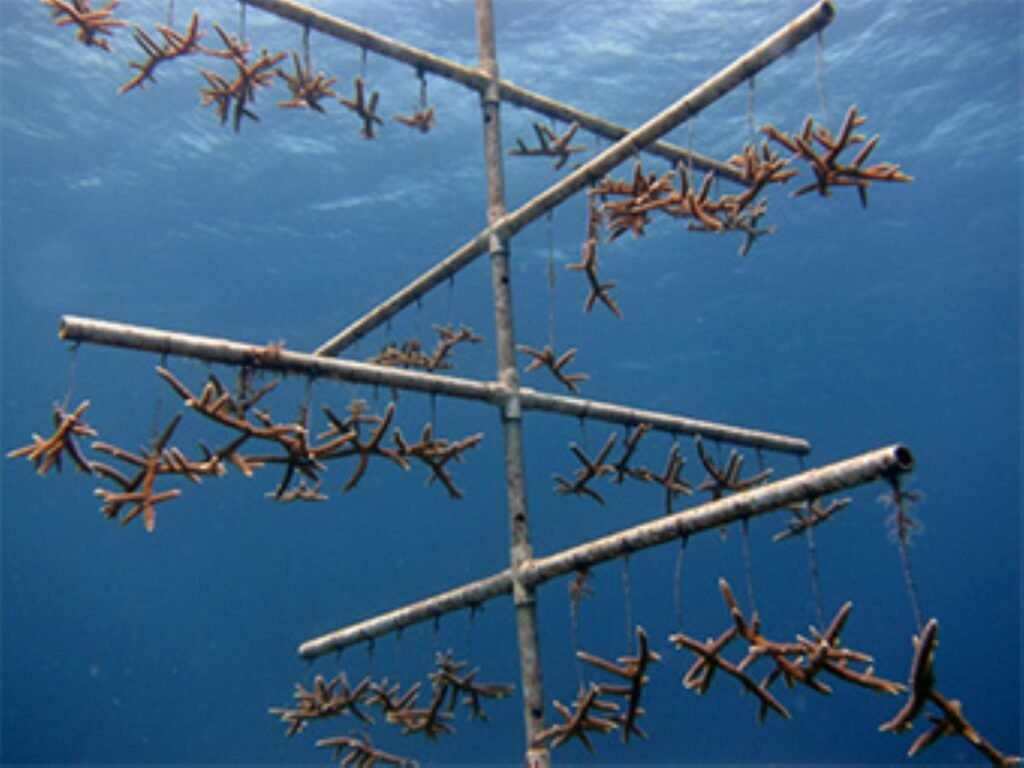
In 2024, scientists continued their effort to collect long-term, high-quality data on the coral reef communities of Hawaiʻi. They built upon previous surveys dating back to 2005 for the main Hawaiian Islands, and to 2000 for the Papahānaumokuākea Marine National Monument. This extensive monitoring program provides crucial baseline data for measuring restoration success.
Around the island of Kaho’olawe, scientists were happy to find pockets of thriving coral reefs. Scientists and managers can learn a lot about the reefs around this island as it is a protected area. It is recovering from the many years (1941–1990) it was used by the military as a bombing range. This recovery demonstrates the remarkable resilience of coral ecosystems when given protection and time to heal.
The findings from these assessments provide critical insights into how climate change, pollution, overfishing, and other stressors are impacting coral reefs. Such data is instrumental for creating effective conservation and management strategies to ensure the resilience of Hawaii’s coral ecosystems. The monitoring program helps scientists understand which restoration techniques work best under different conditions.
Economic and Cultural Value Drives Conservation Investment
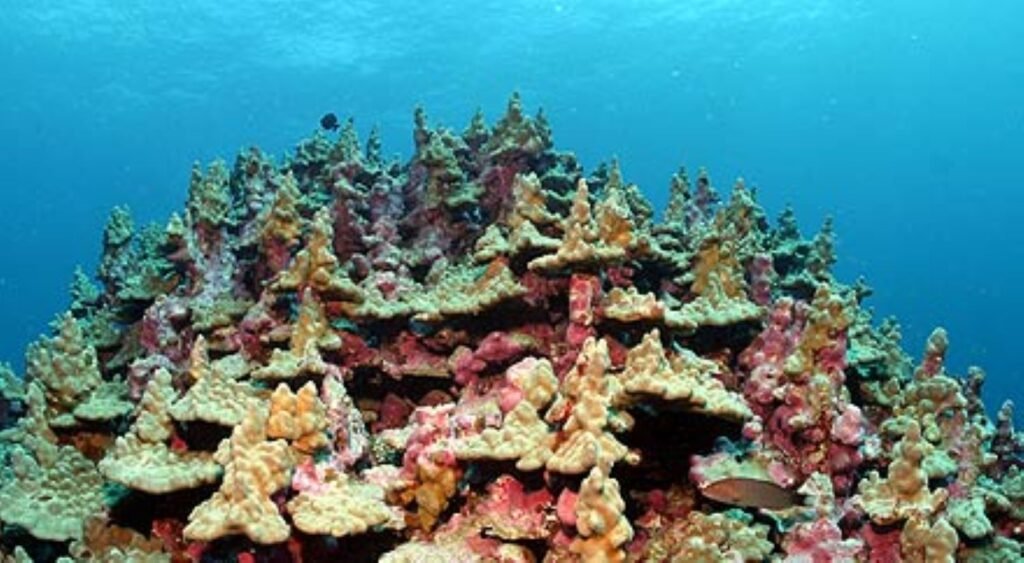
Hawaiʻi coral reefs support vibrant communities of coral, fish, and other ocean life – despite facing increasing threats. That life, in turn, provides Hawaiʻi with an estimated economic value of $863 million annually. This enormous economic value justifies the substantial investment in coral restoration programs.
Beyond economic considerations, coral reefs provide essential ecosystem services. Healthy coral reefs are important to the people of Hawaiʻi for many reasons. Coral reefs protect Hawaiʻi’s shorelines and infrastructure during storms from high wave impacts and erosion and provide jobs to thousands of residents. Reefs also provide habitat for many fish species providing food security to thousands of people.
Hawai’i’s coral reefs support a remarkably diverse community of fish, birds, marine mammals, and other flora and fauna, many of which are uniquely found in the Hawaiian Islands. Nearly a quarter of the species in Papahānaumokuākea Marine National Monument, one of the largest marine protected areas in the world, are only found in the Hawaiian Archipelago. This exceptional biodiversity makes Hawaii’s coral restoration efforts globally significant.
Future Outlook: Scaling Success Across the Pacific

If successful, the project could provide knowledge for how to restore ailing reefs around the world suffering from an onslaught of human-driven thermal stress. Hawaii’s coral restoration program is being closely watched by marine scientists and conservation organizations worldwide as a potential model for large-scale reef recovery.
While the ʻĀkoʻakoʻa program has not yet attempted this full-scale larval injection, the team anticipates starting in 2025, and will be trialing the technique in some locations in 2024. This timeline suggests that the most ambitious phase of the restoration program is just beginning.
The comprehensive approach being developed in Hawaii addresses multiple aspects of reef health simultaneously. The Hawaii Coral Reef Strategy 2030 emphasizes the inclusion of communities in coral restoration and conservation, and the need to work mauka to makai, from ridge to reef (or literally, toward the mountains and toward the sea), to promote reef resilience. This holistic strategy recognizes that healthy reefs depend on healthy watersheds and engaged communities.
Conclusion

The remarkable recovery of Hawaii’s coral forests represents far more than a local conservation success story. Through innovative partnerships between scientists, communities, and industry, these restoration efforts are pioneering techniques that could revolutionize coral conservation worldwide. From the largest coral nursery in the Pacific to groundbreaking thermal tolerance research, Hawaii is proving that even the most damaged ecosystems can recover with the right combination of science, funding, and community commitment.
The transformation of what began as a coral bleaching disaster into a story of hope and recovery demonstrates the power of turning challenges into opportunities. As these underwater forests continue to flourish and expand, they serve as living proof that marine ecosystems can be restored at unprecedented scales when we combine cutting-edge science with traditional wisdom and unwavering determination. What do you think about Hawaii’s approach to coral restoration? Could these techniques work in your local waters?

Hi, I’m Andrew, and I come from India. Experienced content specialist with a passion for writing. My forte includes health and wellness, Travel, Animals, and Nature. A nature nomad, I am obsessed with mountains and love high-altitude trekking. I have been on several Himalayan treks in India including the Everest Base Camp in Nepal, a profound experience.

